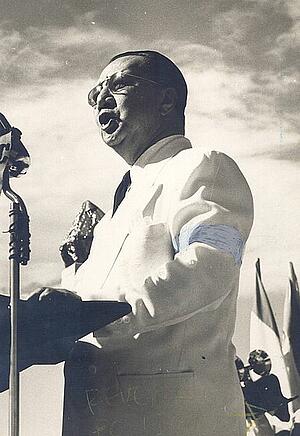President Quirino
Two days after the death of President Roxas, Elpidio Quirino took his oath of office and assumed the presidency on 17th April 1948. The following year when the presidential elections arrived, Quirino ran against Jose P. Laurel of the Nacionalista Party, who described Quirino as corrupt. Historians generally believe that Laurel was actually elected president, but Quirino declared his victory with force and Laurel decided against an aggressive challenge.
Quirino made a number of significant changes during his administration, including issuing Republic Act No. 333 - an amendment to Commonwealth Act No. 502 - which declared that Quezon City be named the new capital of the Philippines instead of Manila. While this was passed, Manila remained the capital for most purposes other than official government business.
Just like Roxas before him, Quirino’s administration was threatened by the left-wing Hukbalahap. Although they were originally an anti-Japanese guerrilla army based in Luzon, the Huks were soon taken over by communists and in 1948 they vowed to overthrow the government. President Quirino was responsible for ordering for a more aggressive policy to be put in place to tackle the Huks, which quelled the dissent for the rest of his time in office.
In spite of his success deflecting the attacks of the Huks, the growing wave of resentment against the Liberal Party encouraged plans to indict President Quirino. Led by Representative Agripino Escareal, a committee that included seven members of the House of Representatives prepared a five-count accusation. After several hearings on 19th April 1949, which lasted throughout the night, Quirino was exonerated.

Quirino went on to be elected for a second term, although it is largely believed to have been corrupt. However, his celebrations were short lived when the Hukbalahap once again threatened the administration. By March 1951, the communists were estimated to have more than 40,000 members and the government was forced to continue its peace campaign to address the disorder. This included the creation of more than 30,000 hectares of settlements for the Huks, with less than ten per cent of those who ultimately settled there giving up their new life. Military reorganisation was also addressed at this time, resulting in a much stronger army for the Philippines.
When the 1953 presidential election arrived, Quirino ran for re-election as predicted despite ill health. However, the Nationalista and Democratic Parties decided to form a coalition to ensure he did not succeed. On election day, Quirino was defeated by Ramon Magsaysay by a majority vote of 1.5 million.
MLA Citation/Reference
"President Quirino". HistoryLearning.com. 2024. Web.
